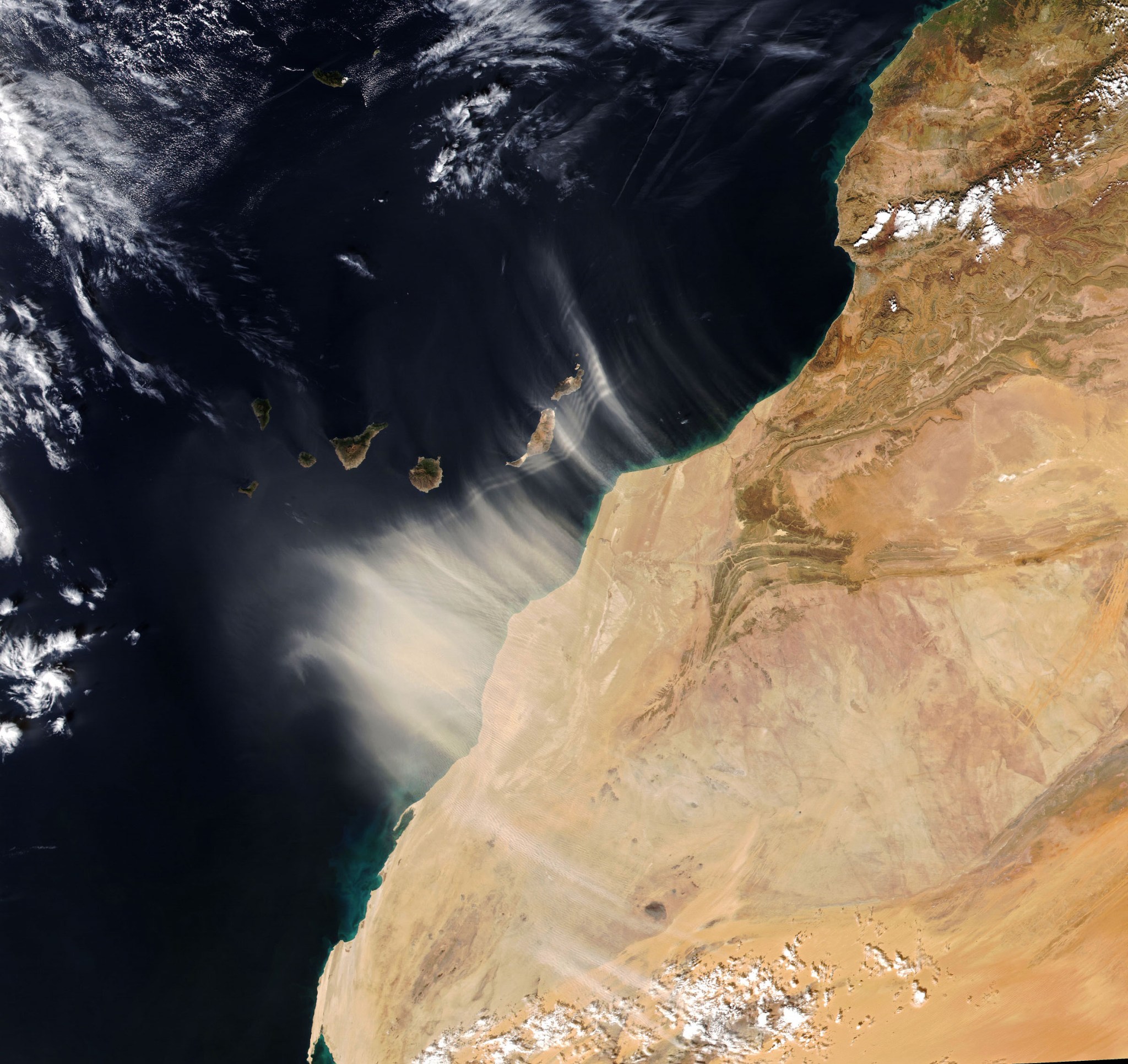
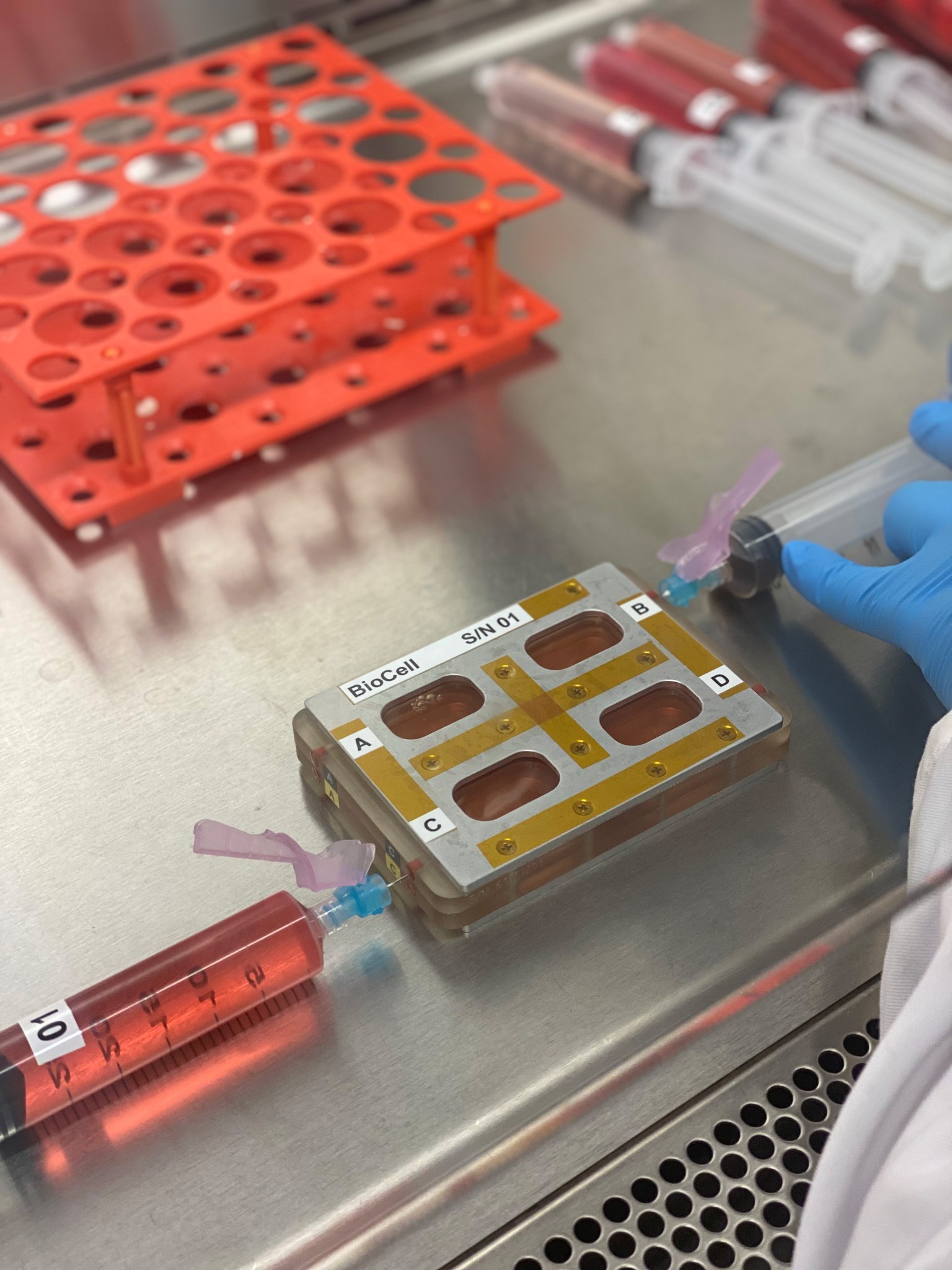
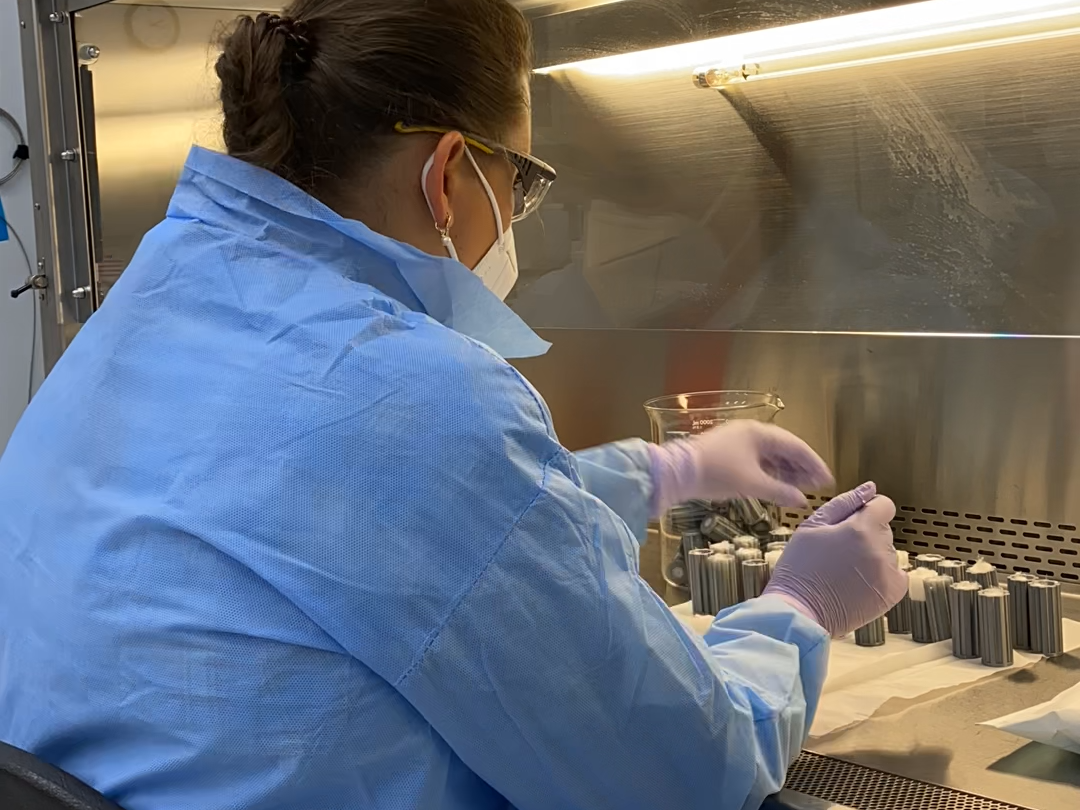
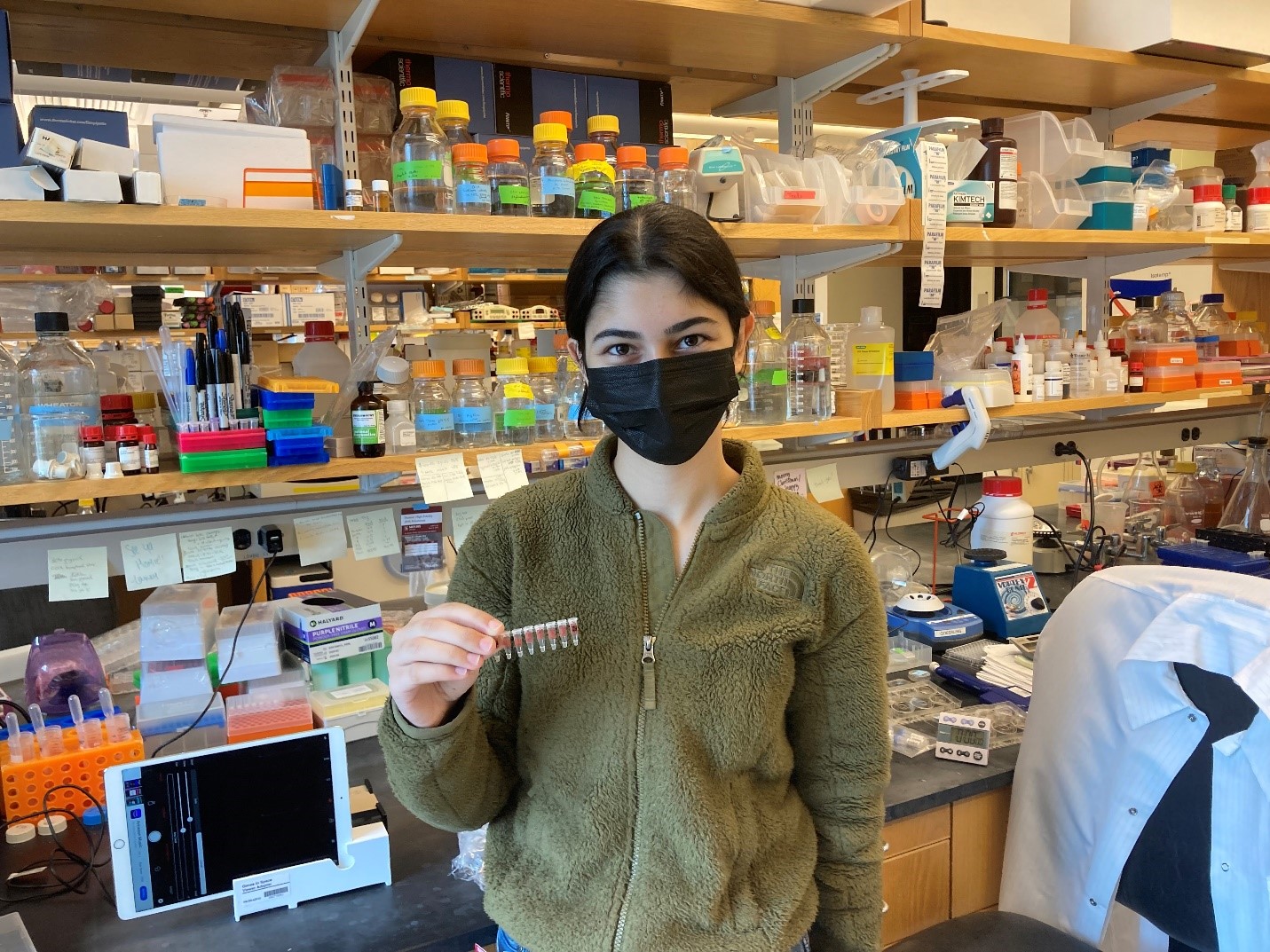
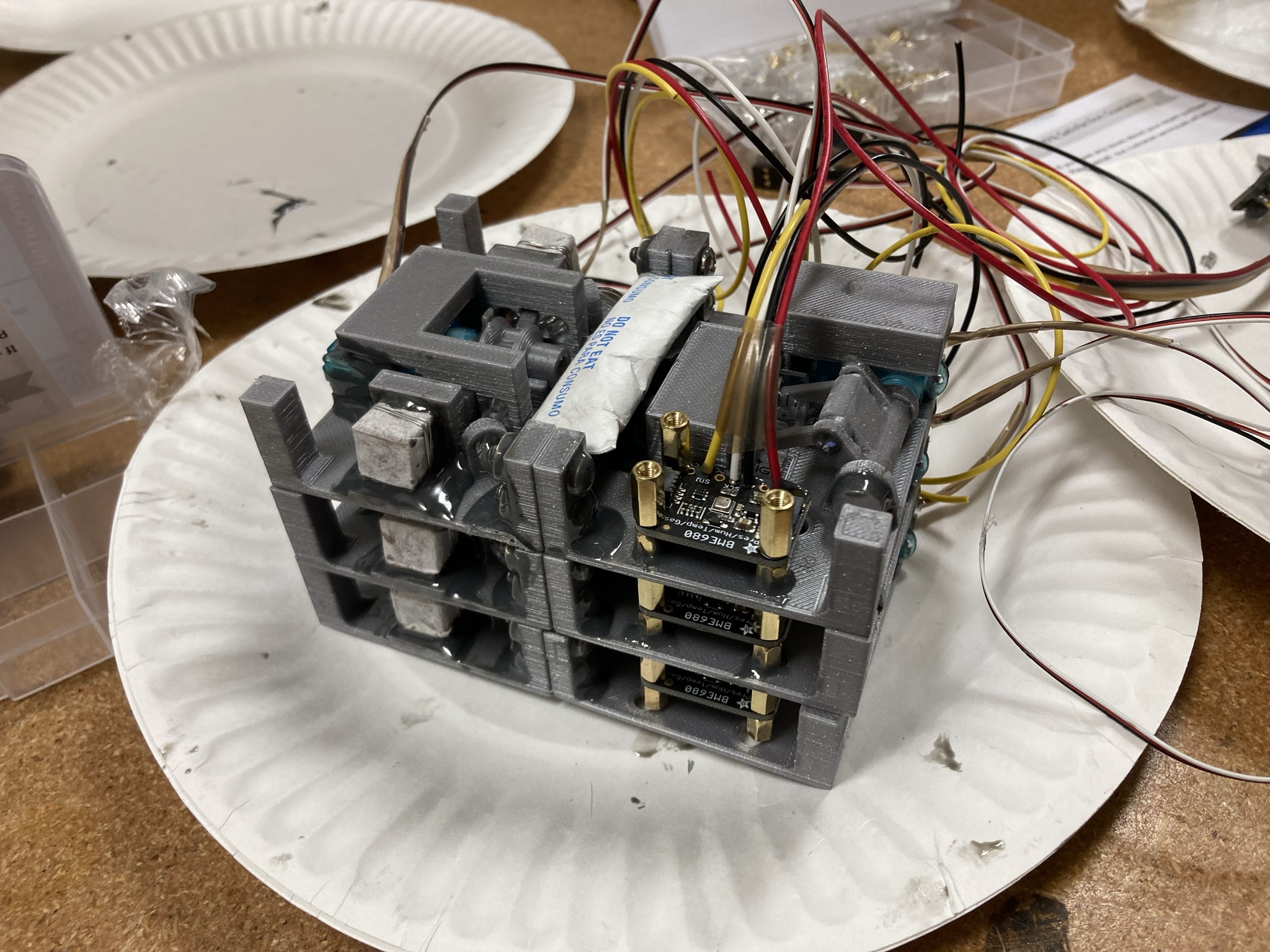
Lee esta historia en español aquí.
The 25th SpaceX cargo resupply services mission (SpaceX CRS-25) carrying scientific research and technology demonstrations to the International Space Station is planned to launch from NASA’s Kennedy Space Center in Florida. Experiments aboard the Dragon capsule include studies of the immune system, Earth’s oceans, soil communities, and cell-free biomarkers, along with mapping the composition of Earth’s dust and testing an alternative to concrete.
Download high-resolution photos and videos of the research mentioned in this article.
Here are more details on some of the research launching to the space station:
Mapping Earth’s dust
The Earth Surface Mineral Dust Source Investigation (EMIT), developed by NASA’s Jet Propulsion Laboratory in California, employs NASA imaging spectroscopy technology to measure the mineral composition of dust in Earth’s arid regions. Mineral dust blown into the air can travel significant distances and have impact Earth’s climate, weather, vegetation, and more. For example, dust containing dark minerals that absorb sunlight can warm an area, while light-colored mineral dust can cool it. Blowing dust also affects air quality, surface conditions such as rate of snow melt, and phytoplankton health in the ocean. The investigation collects images for one year to generate maps of the mineral composition in the regions on Earth that produce dust. Such mapping could advance our understanding of the effects of mineral dust on human populations now and in the future.
Speedier immune system aging
Aging is associated with changes in the immune response known as immunosenescence. Microgravity causes changes in human immune cells that resemble this condition but happen faster than the actual process of aging on Earth. The Immunosenescence investigation, sponsored by ISS National Lab, uses tissue chips to study how microgravity affects immune function during flight and whether immune cells recover post-flight. Tissue chips are small devices that contain human cells in a 3D structure, allowing scientists to test how those cells respond to stresses, drugs, and genetic changes.
“Immune aging impacts tissue stem cells and their ability to repair tissues and organs,” says principal investigator Sonja Schrepfer, professor of surgery at University of California San Francisco. “Our studies aim to understand critical pathways to prevent and to reverse aging of immune cells.”
“Spaceflight conditions enable the study of immune aging that would not be feasible in the lab,” says co-investigator Tobias Deuse, professor of surgery at UCSF. This work could support development of treatments for immune system aging on Earth. The investigation also could support development of methods to protect astronauts during future long-duration spaceflight.
Small satellites, big science
One of five CubeSats on this mission sponsored by NASA’s Launch Services Program, BeaverCube launches to the space station for deployment into low-Earth orbit. The small satellite uses multiple cameras, one that takes color images of Earth’s oceans and two that collect thermal images of cloud tops and the ocean surface. Cloud top and ocean surface temperatures help scientists understand Earth’s climate and weather systems. The collected data also can improve understanding of the ocean’s concentration of phytoplankton, a significant factor in the generation of atmospheric oxygen.
“Most Earth observation missions primarily image over land, focusing on populated areas and targets of interest. BeaverCube will focus on imaging oceans and coastal regions, combining thermal images with visible images to help us better understand ocean fronts,” says principal investigator Kerri Cahoy, professor of aeronautics and astronautics at the Massachusetts Institute of Technology. “BeaverCube also plans to demonstrate electrospray propulsion, to understand its performance before and after drag forces begin to significantly affect the spacecraft and we deorbit.”
Soil in space
On Earth, complex communities of microorganisms carry out key functions in soil, including cycling of carbon and other nutrients and supporting plant growth. DynaMoS, sponsored by NASA’s Division of Biological and Physical Sciences (BPS), examines how microgravity affects metabolic interactions in communities of soil microbes. This research focuses on microbe communities that decompose chitin, a natural carbon polymer on Earth.
“Soil microorganisms carry out beneficial functions that are essential for life on our planet,” says principal investigator Janet K. Jansson, chief scientist and laboratory fellow at Pacific Northwest National Laboratory. “To harness these beneficial activities for future space missions, we need to understand more about how conditions in space, like microgravity and radiation, influence these microbes and the beneficial functions that they provide. Perhaps in the future, we will use beneficial soil microbes to enhance growth of crops on the lunar surface.”
Improved understanding of the function of soil microorganism communities also could reveal ways to optimize these communities to support agricultural production on Earth.
Genes, no cells
Cell-free technology is a platform for producing protein without specialized equipment of living cells that need to be cultured. Genes in Space-9, sponsored by the ISS National Lab, demonstrates cell-free production of protein in microgravity and evaluates two cell-free biosensors that can detect specific target molecules. This technology could provide a simple, portable, and low-cost tool for medical diagnostics, on-demand production of medicine and vaccines, and environmental monitoring on future space missions.
“Biosensors are a class of synthetic biology tools with immense potential for spaceflight applications in contaminant detection, environmental monitoring, and point-of-care diagnostics,” said Selin Kocalar, student winner of Genes in Space 2021. “This investigation seeks to validate their use aboard the space station. If it is successful, Genes in Space-9 will lay the foundation for downstream applications of biosensors for space exploration and resource-limited settings on Earth.”
Genes in Space, an annual research competition, challenges students in grades 7 through 12 to design DNA experiments to be conducted on the space station. The program has launched eight investigations so far, and some have resulted in publications furthering our knowledge on genetics experiments through space-based research, including the first experiment to use CRISPR technology in microgravity in 2019.
Better concrete
Biopolymer Research for In-Situ Capabilities looks at how microgravity affects the process of creating a concrete alternative made with an organic material and on-site materials such as lunar or Martian dust, known as a biopolymer soil composite (BPC). Using resources available where construction takes place makes it possible to increase the mass of the construction material and, therefore, the amount of shielding.
“Astronauts on the Moon and Mars will need habitats that provide radiation shielding, but transporting large amounts of conventional construction materials from Earth is logistically and financially infeasible,” said team member Laywood Fayne. “Our student team, led by Michael Lepech from the Blume Earthquake Engineering Center at Stanford University, is studying a way to convert regolith in these environments into a concrete-like material by mixing in water and a protein known as bovine serum albumin.”
This material hardens as the water evaporates, a process affected by gravity, explains team co-lead James Wall. “Our project consists of making six bricks in microgravity to compare to bricks made on Earth at 1 g and less than 1 g,” Wall says. “We will investigate the number and orientations of protein bridges, compressive strength, and porosity. Our conclusions could help determine how these bricks might form on the Moon and Mars.”
BPCs also could offer an environmentally friendly concrete alternative for making structures on Earth. In 2018, concrete production represented 8% of global carbon emissions. BPC material has zero carbon emissions and can be made from local, readily available resources, which also simplifies supply chains. This experiment is a part of NASA’s Student Payload Opportunity with Citizen Science (SPOCS) program, which provides students enrolled in institutions of higher learning the opportunity to design and build an experiment to fly to and return from the International Space Station.
For daily updates, follow @ISS_Research, Space Station Research and Technology News or our Facebook. For opportunities to see the space station pass over your town, check out Spot the Station.
Melissa Gaskill
International Space Station Program Research Office
Johnson Space Center

























